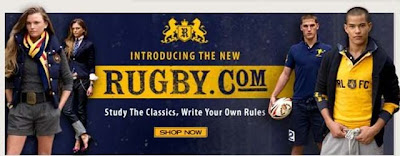 Twitter Logo - Image Credit: Twitter
Twitter Logo - Image Credit: TwitterTwitter - The Beak Speaks And Delivers
The beautiful thing about New Media is that it defies control yet exemplifies what can be done in an atmosphere of freedom and creativity.
Take Twitter for example; a free communications service that has just a couple of simple rules framed in a social connection portal designed with very little complexity other than member connection and “hash tag”.
Working the tools provided inside of this atmosphere becomes a little like gold mining with a pan in hand based upon what the desire of the “network initiator” is when one enters into this world of micro-messaging (limit: 140 characters known as "tweets") through answering the truly dynamic question - What are you doing?
 Image Credit: Venture Beat
Image Credit: Venture Beat This excerpted and edited from Venture Beat -
Twitter has made Dell $1 million in revenue
MG Siegler, Venture Beat | December 15th, 2008
Everyone loves talking about Twitter’s business model — because there isn’t one yet, and they’ll keep talking about it until there is one. But it’s becoming more clear that while a business model is of course important, Twitter is perhaps the perfect example of a company that can afford to take its time in finding the one that is perfect for it. That’s because other businesses are building so much on top of the micro-messaging service and using it for their own services. If worst came to worst, and Twitter had to sell, there would probably be a bidding war of a magnitude that would make it seem like this country wasn’t in the midst of a recession.
InternetNews has a good rundown of the Twitter/business phenomenon. Buried in it is this gem:
Less altruistically, some businesses have discovered that Twitter is an effective way of communicating with consumers. Dell (NASDAQ: DELL) says Twitter has produced $1 million in revenue over the past year and a half through sale alerts. People who sign up to follow Dell on Twitter receive messages when discounted products are available the company’s Home Outlet Store. They can click over to purchase the product or forward the information to others.----
While a million dollars may not be much to a company like Dell, for some smaller companies that are also using Twitter as a sales/promotional tool, it is no doubt invaluable.
Reference Here>>
Understanding a service like Twitter is probably more of a matter of, again, understanding the nature of that question - What are you doing?
 Image Credit: Twitter_Tips
Image Credit: Twitter_TipsThis excerpted and edited from InternetNews -
What Keeps Twitter Chirping Along
By David Miller - December 10, 2008
It's practically impossible to find a story that doesn't darkly point out that the microblogging service Twitter has no revenue model, yet despite that concern, all the complaints about unreliable service, the rants about the exceptionally high noise-to-signal ratio, the outright attacks that accuse the company of "top-to-bottom incompetence," Twitter keeps on tweeting and seems likely to continue doing so into the foreseeable future.
----
"We're using Twitter to get info out to the public and the media," said Claire Sale, an interactive media specialist with the Red Cross. "Twitter offers a single stream of information, and it's been most successful in disaster response, like the recent wildfires in California.
----
You might check a blog or an RSS feed once a day, but people tend to follow Twitter constantly." The Red Cross has 3,000+ "followers," people who have signed on to view their tweets.
----
Dell started experimenting with Twitter in March of 2007 after the South by Southwest conference, an annual tech/music festival in Austin, Texas. Conference attendees could keep tabs on each other via a stream of Twitter messages on 60-inch plasma screens set up in the conference hallways. There are now 65 Twitter groups on Dell.com, with 2,475 followers for the Dell Home Outlet Store.
----
Good for customer service: Discount airline Jet Blue also uses Twitter to offer real-time discounts, sometimes even offering tickets or adding flights when large numbers of people are Twittering sadly about the lack of transport options to a conference or festival. JetBlue also monitors Twitter for comments about the company, responding quickly to compliments and complaints, and following its customers.
"Asking when Twitter will end is like saying, ‘When will the cell phone fad end'?" said David Spark, founder of Spark Media Solutions, a storytelling production company. "The value of cell phones can't end, it only can be replaced by something that provides the same value and more. Once we have a capability, we never want it taken away from us."
----
Of course not everyone is a fan. Google "I Hate Twitter" and you'll see plenty of gripes, mostly about the banality of tweets and peoples' increasing belief that everyone in the world is their very own '50s sitcom mother, endlessly fascinated by every single one of their thoughts and actions.
"I find Twitter incredibly annoying, both as a user and bystander," said Trisha Creekmore, interactive executive producer for Discovery.com. ''There's nothing more annoying than trying to enjoy an event with a bunch of Twitter geeks and having to stop every five seconds for them to tweet into their mobile device. If you're at an event, BE at the event. Or leave."
Reference Here>>
When communication is more important than control, Twitter’s micro-communications platform delivers a multitude of functional enterprise options upon which any effort might be aided by understanding and using that basic question, “What are you doing?” … operative word - DOING!





































